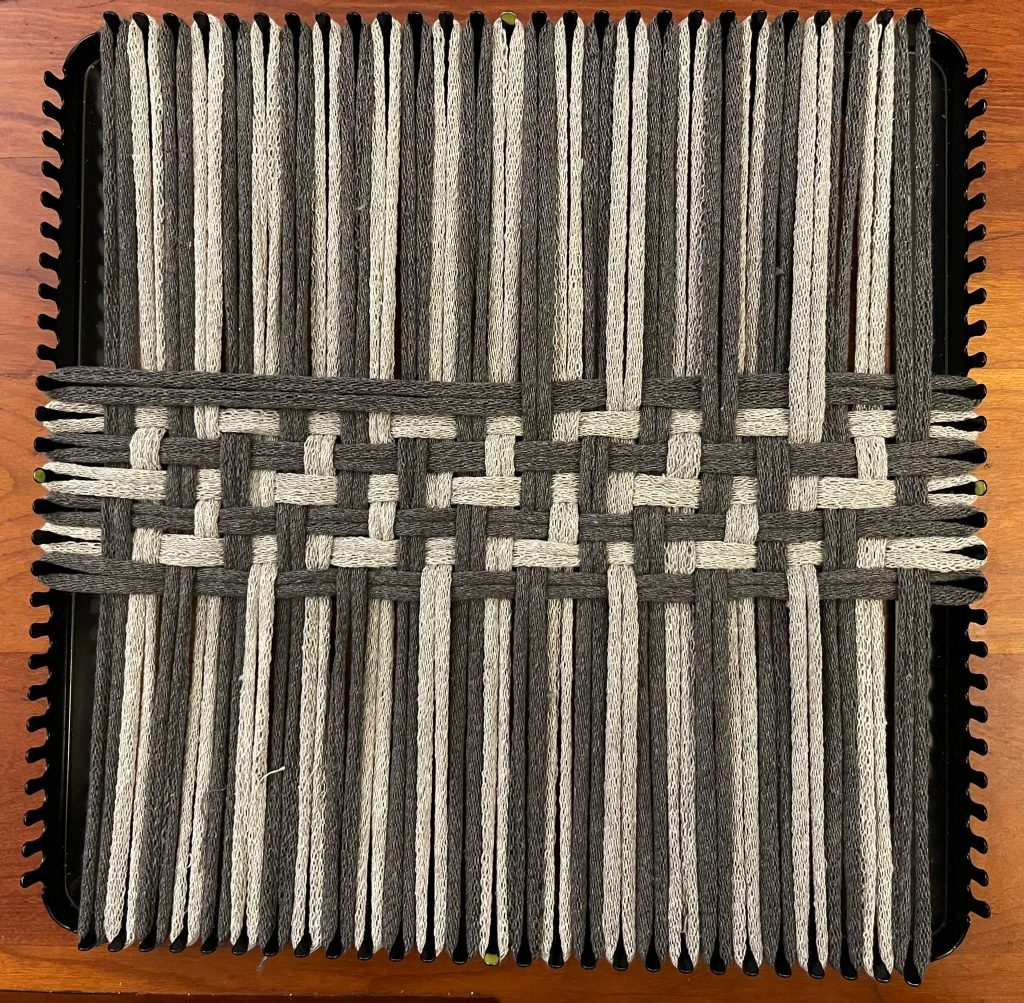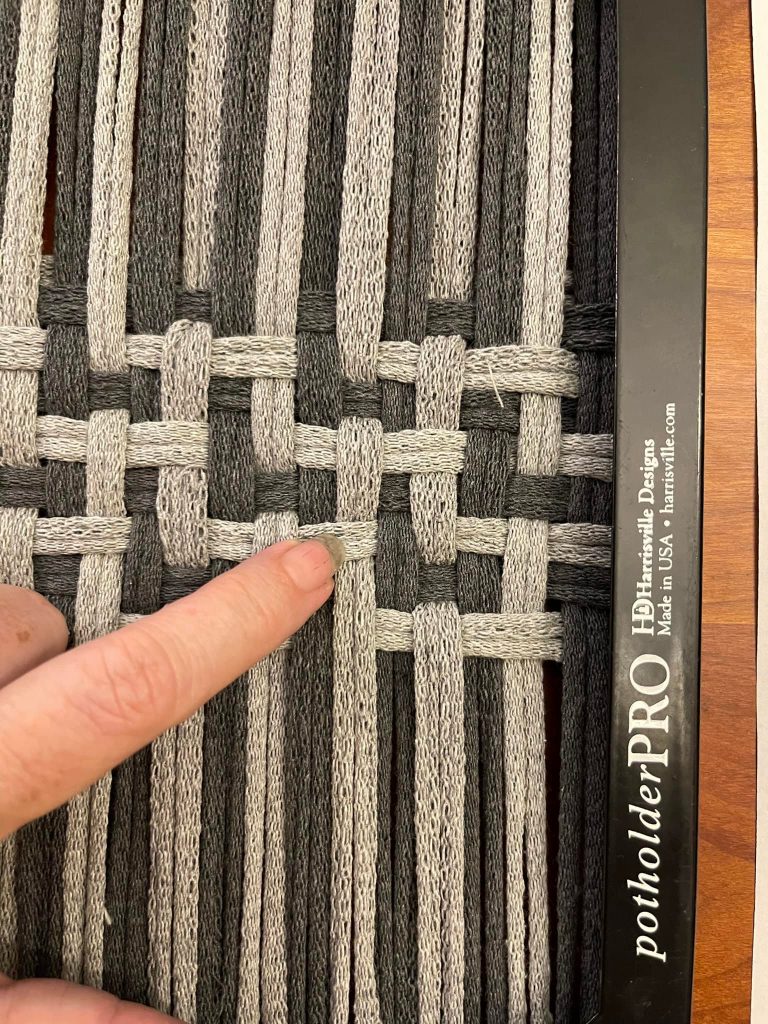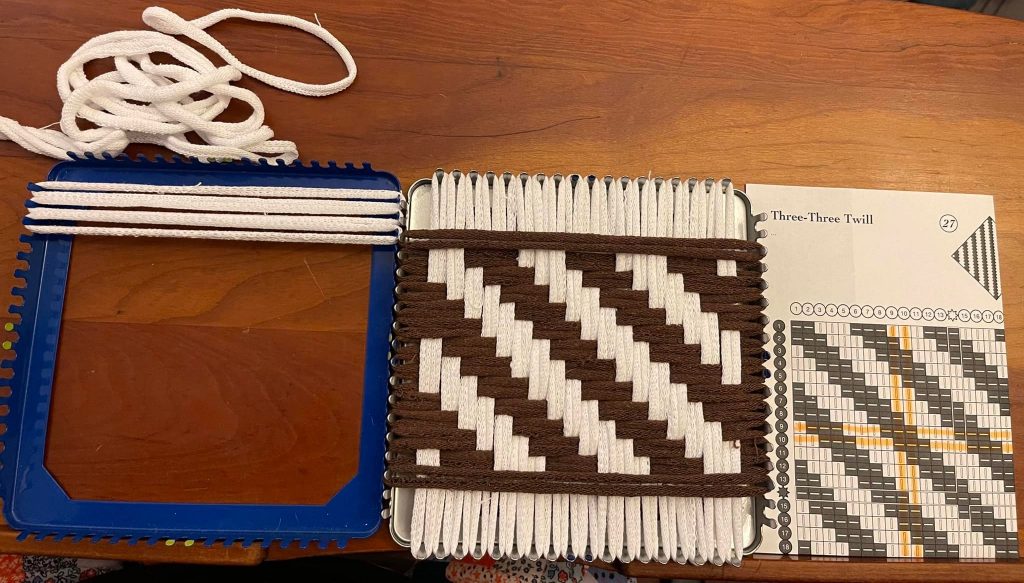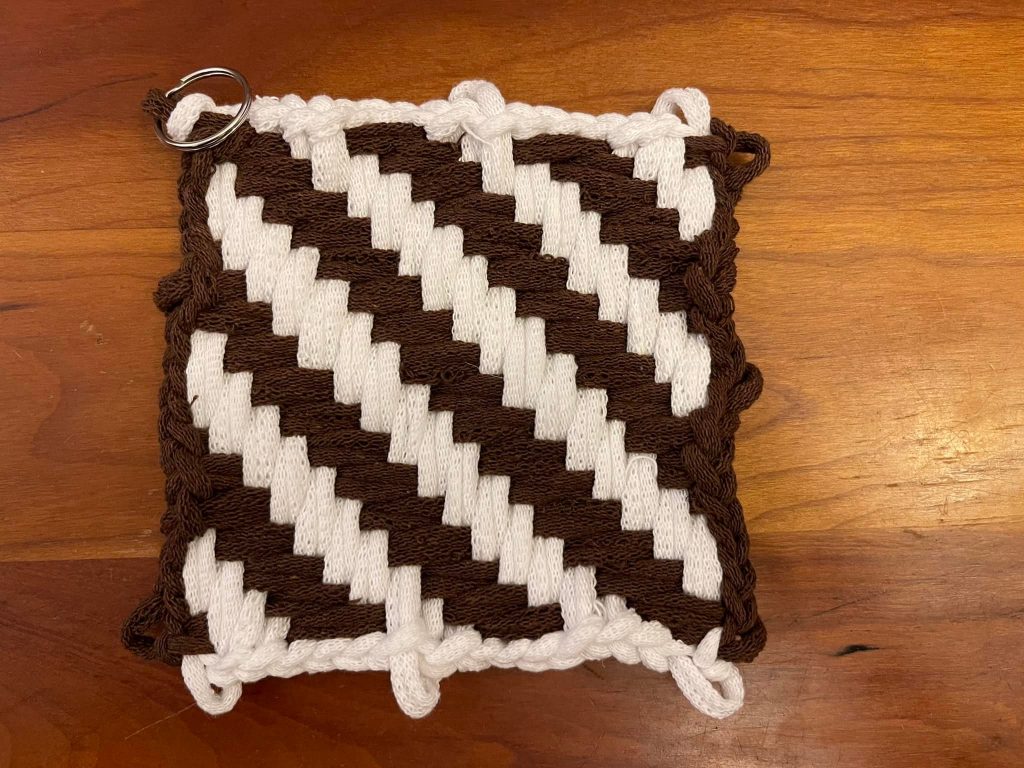There I am, weaving along, when something on the back feels wrong…

Here’s a closeup of where I noticed the row had gone wrong…

And when I flip it over to look at the back, I find a loose column! That is absolutely not in the pattern.

Here is the point at which I went wrong, in the row before this one. The pattern on the even row is 2/2/1/1 repeating. Here, I went 2/2/1/1/1 before continuing 2/2/1/1 through the end of the row.

Pull out the offending row to the crossing that I made the wrong way…

Pick up the next under, and now we are back in pattern of 2/2/1/1…

Continue re-weaving into the pattern, picking up the next 1…

…ending with a 1 (so it looks like 2/2/1/1/1 at the end. of the 3rd row down) because that is the odd row out. It would be part of the first 2 of the 2/2/1/1 pattern if there were more columns to weave.

Check the back to confirm that the loose column is properly tied down.

And we’re done!
Oh, wait. This looks weird? See the small boxes at the top? We don’t have those on our chart. Note also the pattern direction change? Yes, I turned my loom upside down in the course of weaving the row before this one, but then worked that last row as if it were row 1.

So, to make things easier, I turn my chart upside down, and fix the “last” row, which is now at the top of my chart.

All better! No more boxes, scales all the way to the edge.
See Also:
- Fish Scales, to see the completed fabric off the loom.
- Purse, to see this folded and sewn into a small container.













































































